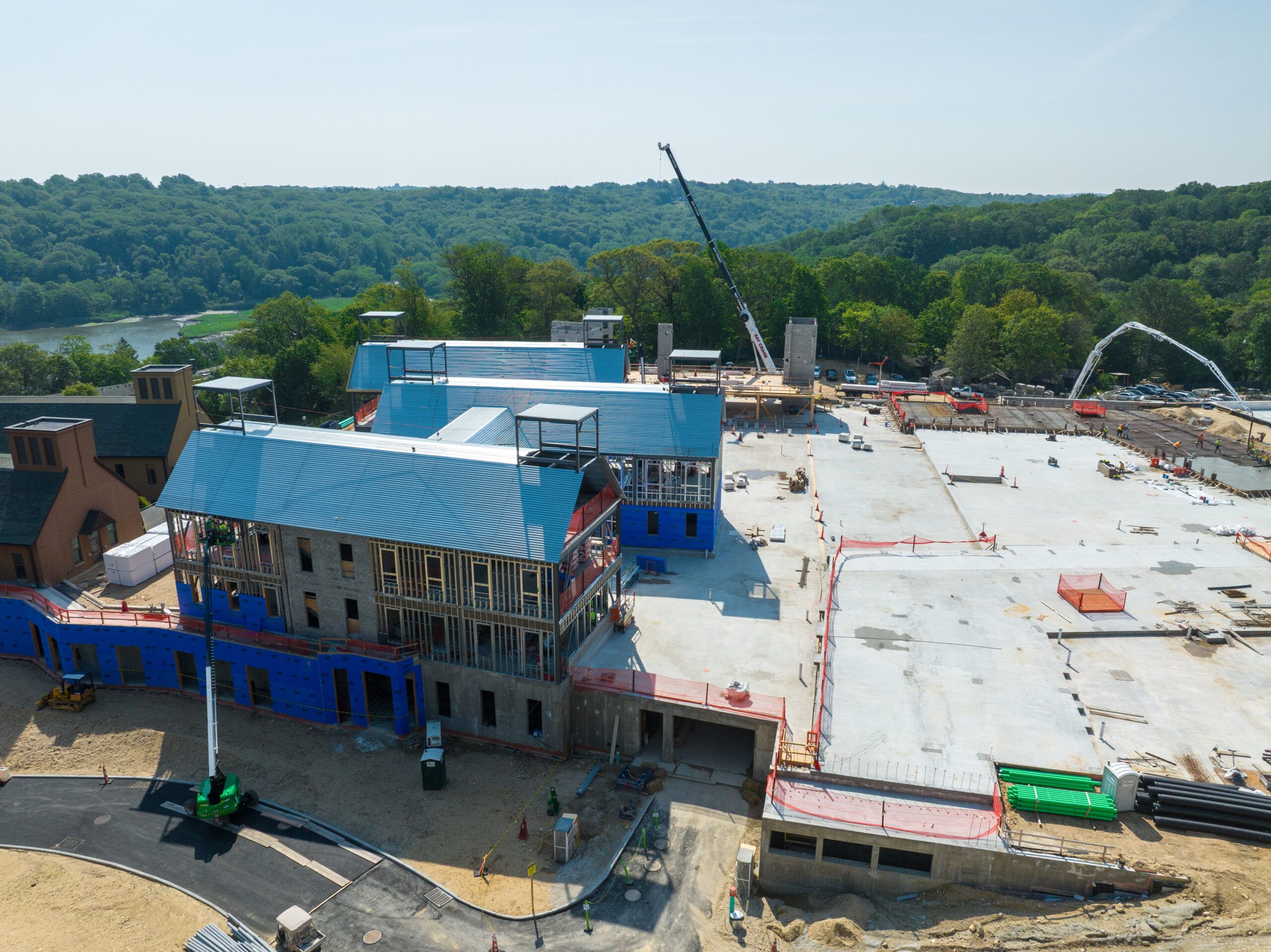When it comes to construction in the UK, the location of a project can be just as important as its design. The country’s diverse geography, weather patterns, and planning restrictions mean that builders face different challenges depending on where they work. From the urban sprawls of the South East to the rugged terrain of the Scottish Highlands, understanding these regional differences is key to delivering safe, long-lasting structures.
In this article, we’ll take a look at the unique construction issues across the UK’s main regions — and how they affect the work of both tradespeople and specialists alike.
South East
Key Issue – Tight Spaces and Urban Complexity
Construction in the South East, particularly around major commuter towns like Luton, often involves working in highly developed urban areas. Tight access, older buildings, and high population density are everyday obstacles for tradespeople.
For example, roofing projects in towns like Luton and Peterbrough must be carefully planned to avoid disruption to neighbouring properties. Many homes were built during post-war expansion, which means they now need repairs or upgrades that aren’t always straightforward. Roofers often have to work around limited access points, manage debris in confined spaces, and ensure compliance with modern insulation standards — all while keeping disruptions to a minimum. Roofing services in Luton, Peterborough, Milton Keynes, and Bedford are vital to ensure homes remain weather-resistant, energy-efficient, and compliant with modern building standards across the region.
South West
Key Issue – Older Buildings and Sloping Ground
In the South West, the landscape is more varied, with a high number of listed properties and period buildings. Construction here often means dealing with structures that weren’t designed for today’s materials or methods. Builders must balance the need to preserve character with modern safety and energy standards.
On top of that, the region’s rolling hills and coastal slopes mean foundations and retaining walls need careful planning. It’s not uncommon to see significant investment go into groundwork before a single brick is laid, particularly in areas like Cornwall and Devon.
Wales
Key Issue – Coastal Pressures and Engineering Demands
Across Wales, especially in coastal towns like Swansea, weather and sea exposure are constant factors. Salt air, strong winds, and rainfall levels all play a part in how buildings are designed and maintained.
Construction companies in these areas often rely heavily on experienced structural engineering in Swansea, Cardiff, Llalleni, particularly for projects near the coastline or on sloping sites. The job doesn’t stop at ensuring a structure stands — it has to last, and resist the unique pressures that come with Wales’ coastal climate.
Midlands
Key Issue – Balancing New Growth with Old Infrastructure
The Midlands is a mix of growing towns and industrial heritage. New housing developments are popping up rapidly, particularly around Birmingham and Leicester, but they often have to integrate with outdated infrastructure.
For builders, this means dealing with challenges like poor drainage, ageing utility networks, and land that’s been previously used for industrial purposes. Ground contamination, access restrictions, and local authority red tape can turn even a simple project into a logistical puzzle.
North East
Key Issue – Weather Resistance and Post-Industrial Recovery
The North East has seen plenty of regeneration in recent years, but many areas still carry the legacy of old industries and poor-quality housing stock. In coastal areas like Sunderland and Hartlepool, exposure to North Sea weather can be brutal. Strong winds and driving rain put materials and workmanship to the test.
The region also has a high number of social housing refurbishments underway. This puts pressure on contractors to complete work quickly and affordably without cutting corners on safety or quality — particularly when working with external cladding or roofing materials.
North West
Key Issue – Wet Conditions and Diverse Property Types
Builders in the North West are no strangers to wet weather. Greater Manchester and Liverpool both see high levels of rainfall throughout the year, and that has a direct impact on building work. Moisture management becomes a top priority, especially in basement conversions and roofing upgrades.
Properties in this region vary widely — from 19th-century terraces to new-build flats — so there’s no one-size-fits-all approach. Contractors often need to adapt quickly between projects, switching methods or materials depending on age, condition, and use.
London
Key Issue – High Density and Strict Regulations
London poses some of the most complex construction challenges in the UK. Space is tight, demand is high, and planning regulations are among the strictest in the country. Builders often face constraints before they even break ground — from limited site access and listed building restrictions to neighbourhood opposition and noise control limits.
Working in London also means coordinating with multiple contractors in tight timeframes. Whether it’s a loft conversion in Hackney or a basement dig in Chelsea, projects often require precise scheduling to keep things moving. Health and safety inspections are frequent, and even small oversights can result in delays or penalties.
Supply chain timing is another factor. With so many one-way systems and congestion zones, even getting materials to site can turn into a logistical task. For builders operating in the capital, success often comes down to detailed preparation and deep familiarity with local planning rules.
Scotland
Key Issue – Cold Climate and Tougher Standards
Scotland brings its own set of demands. Colder temperatures and longer winters mean that thermal performance plays a big role in every project. Builders need to think about insulation from the ground up — not just in terms of warmth, but also moisture and frost resistance.
There’s also a greater emphasis on sustainability here, especially in the Highlands and Islands where transporting materials is harder. Many Scottish councils place stricter requirements on eco-efficiency, which can affect how builds are planned and executed from day one.
Final Thoughts
Adaptability is Key
No two regions in the UK are quite the same when it comes to construction. Whether it’s roofing contractors navigating tight urban plots in cities, tackling coastal exposure, location plays a critical role in shaping the challenges faced by builders and developers.
Understanding these regional differences doesn’t just help with smoother project delivery — it also ensures that the end result stands the test of time. For tradespeople, homeowners, and anyone planning a new build or renovation, being aware of the local conditions is one of the smartest moves you can make.











